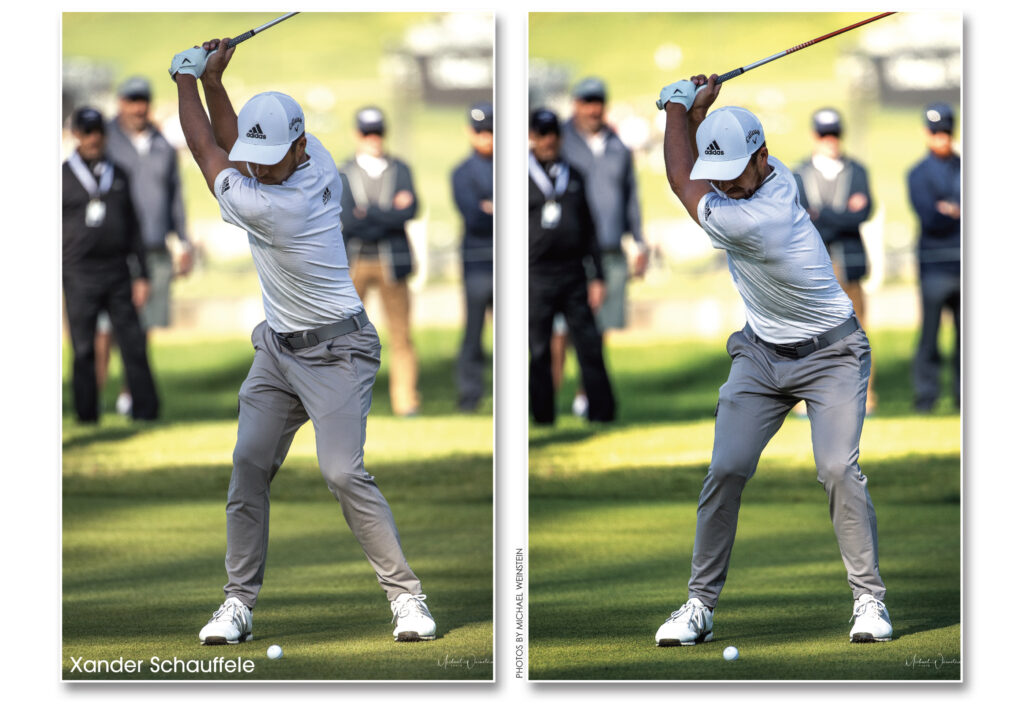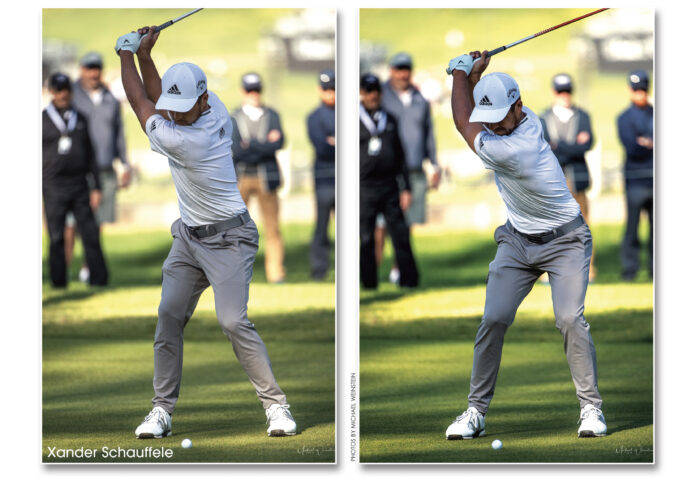
When it comes to the golf swing, few moments are more important than the transition—the instant when the backswing ends and the downswing begins. This move sets the stage for everything that follows, influencing your power, timing, and consistency.
A good transition starts with a solid backswing. As you turn your chest behind the ball and load your weight into the inside of your back foot, your body is storing energy—ready to be released. From this fully loaded position, the downswing begins not with the hands or arms, but with the lower body.
Look at Xander Schauffele at the top of his swing. He’s perfectly coiled, his weight loaded and his body ready to move. His first move is a subtle shift from his back foot to his front foot, as his hips and lower body start to unwind. Importantly, while his weight shifts forward, his shoulders and upper back remain momentarily turned away from the target. This separation between the lower and upper body creates tremendous coil and torque through the midsection—what many instructors call “the engine” of the golf swing. His arms and hands naturally follow, generating the powerful lag and sequence that produce his trademark speed and control.
In the next frame, Xander’s weight has fully transferred into his front leg, a clear sign of a balanced, efficient transition.
The takeaway: the transition is the heartbeat of the golf swing. Master this move—starting the downswing smoothly from the ground up, while maintaining that coil in your core—and you’ll see more consistent strikes, better rhythm, and effortless power.
By John Burckle
Director of Instruction at Golf Lab Academy
www.golflabacademy.com

